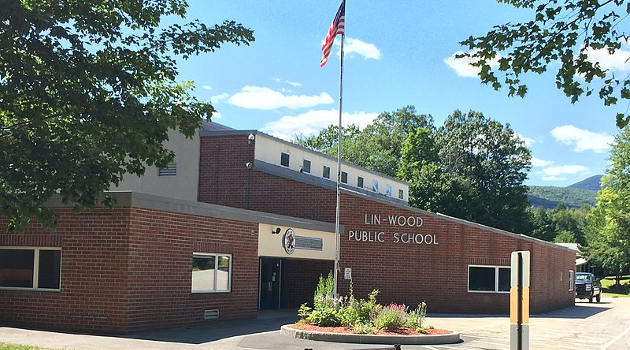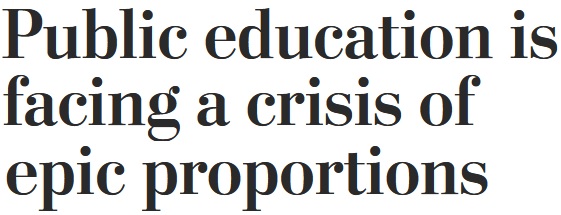What’s the main problem in K-12 education today? Based on news reports, one might think the top challenge involves hot-button social issues such as sex education and critical race theory.
Or maybe pandemic policies such as masking, remote learning, and vaccinations.
Or the malignant role of teacher unions.
Those are real issues, of course, but surely the biggest problem must be that taxpayers are spending ever-more money and getting ever-weaker results.
Given these issues, I was interested to see that the Washington Post has a lengthy article, written by Laura Meckler, that looks at the various challenges facing government schools.
It starts with a grim assessment.
Test scores are down, and violence is up. Parents are screaming at school boards, and children are crying on the couches of social workers. Anger is rising. Patience is falling. For public schools, the numbers are all going in the wrong direction. Enrollment is down. Absenteeism is up. …Public education is facing a crisis unlike anything in decades, and it reaches into almost everything that educators do: from teaching math, to counseling anxious children, to managing the building. …Schools are on the defensive about their pandemic decision-making, their curriculums, their policies regarding race and racial equity and even the contents of their libraries.
As one might suspect, the pandemic made a bad situation worse.
Remote learning, the toll of illness and death, and disruptions to a dependable routine have left students academically behind — particularly students of color and those from poor families. Behavior problems ranging from inability to focus in class all the way to deadly gun violence have gripped campuses. …In fall 2021, 38 percent of third-graders were below grade level in reading, compared with 31 percent historically. In math, 39 percent of students were below grade level, vs. 29 percent historically. …A McKinsey & Co. study found schools with majority-Black populations were five months behind pre-pandemic levels. …Last school year, the number of students who were chronically absent — meaning they have missed more than 10 percent of school days — nearly doubled from before the pandemic.
Many parents have responded to this mess by seeking other options.
More kids are now attending charter schools or private schools, and there’s also been an explosion in home schooling.
Enrollment in traditional public schools fell to less than 49.4 million students in fall 2020, a 2.7 percent drop from a year earlier. …if the trend continues, that will mean less money for public schools as federal and state funding are both contingent on the number of students enrolled. …Some students have shifted to private or charter schools. A rising number, especially Black families, opted for home schooling. And many young children who should have been enrolling in kindergarten delayed school altogether. …charter schools, which are privately run but publicly funded, saw enrollment increase by 7 percent, or nearly 240,000 students, according to the National Alliance for Public Charter Schools. There’s also been a surge in home schooling. Private schools saw enrollment drop slightly in 2020-21 but then rebound this academic year, for a net growth of 1.7 percent over two years.
From my perspective, here’s the best part of the article.
Fueling the pressure on public schools is an ascendant school-choice movement… EdChoice, a group that promotes these programs, tallies seven states that created new school choice programs last year. …Another 15 states expanded existing programs.
Amen. School choice is the answer to our education problems – from the perspective of both students and taxpayers.
We’ve already seen a lot of progress on this issue, but more is needed. I hope more and more states copy nations such as Canada, Sweden, Chile, and the Netherlands and give parents the ability to opt for higher-quality private schools.
P.S. Unsurprisingly, it didn’t help when politicians created a federal Department of Education in the late 1970s. At best, it meant another layer of costly bureaucracy. At worst, it led to mandates and regulations that exacerbated the problem of ever-more spending for ever-weaker results.
P.P.S. Here’s a very amusing video about home schooling.
———
Image credit: Ken Gallager | CC BY-SA 4.0.



